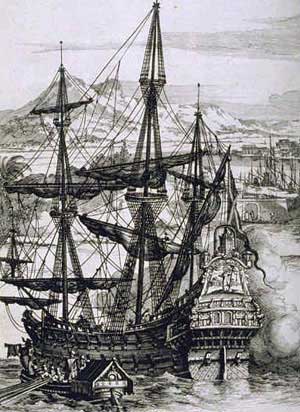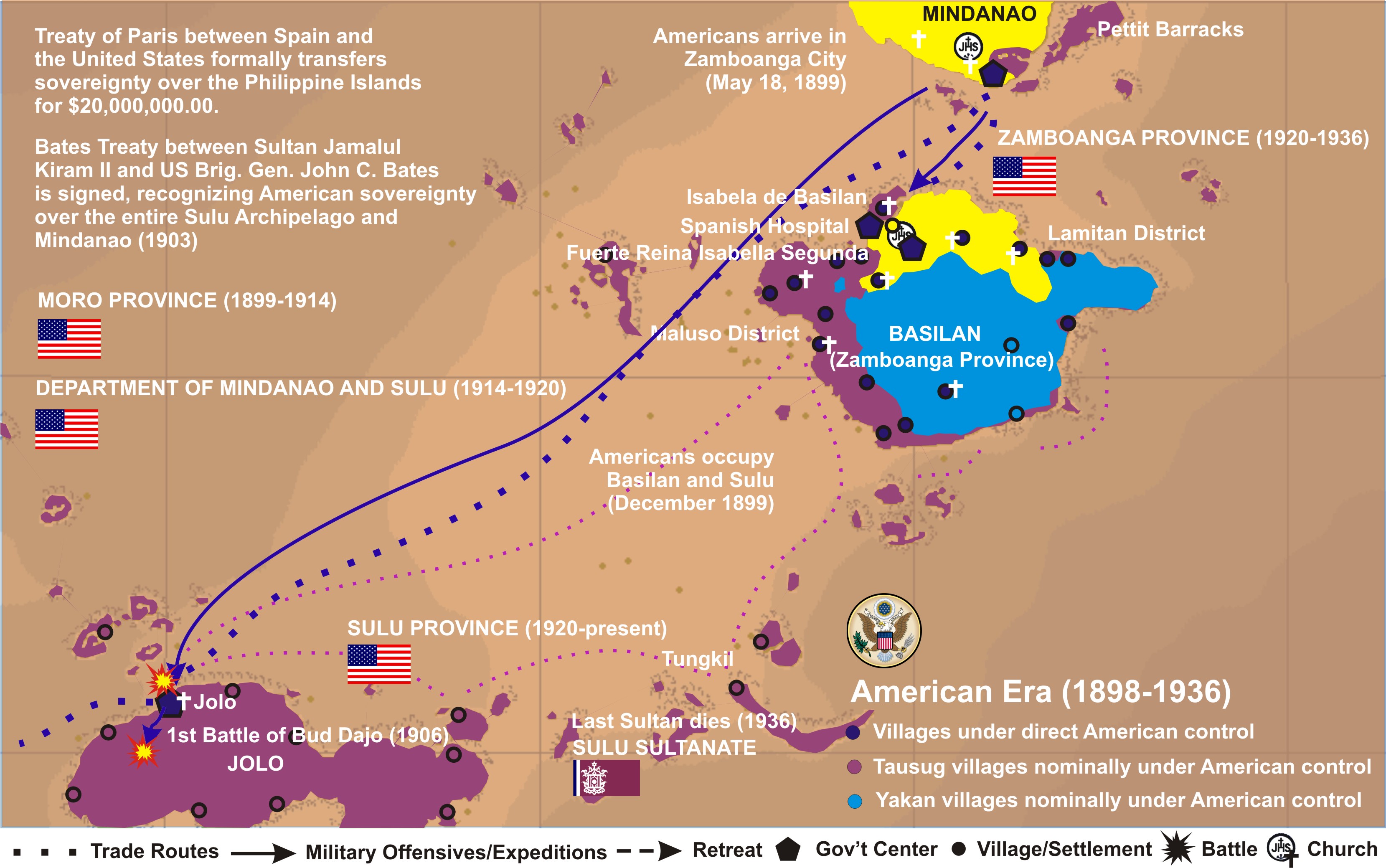|
Philippines Campaign (1944–45)
Philippines campaign may refer to various military campaigns that have been fought in the Philippine Islands, including: Spanish colonial period (1565–1898) *Numerous revolts against Spain during the Spanish colonial period; see Philippine revolts against Spain and Military history of the Philippines#Spanish colonial period (1565–1898) *Various actions fought in the Philippines during the Eighty Years' War between Spain and the Netherlands; see "Eighty Years War (1568–1648)" at Military history of the Philippines#Spanish colonial period (1565–1898) *The Limahong Campaign (1573–1575), an attempt by the Chinese pirate Limahong to seize northern Luzon from Spanish authorities *Various actions fought in the Philippines during the Seven Years War (1756–1763) between European powers; see Military history of the Philippines#Spanish colonial period (1565–1898) and Seven Years' War#Other Continents *The Philippine Revolution (1896–1898), called the "Tagalog Revolt" by ... [...More Info...] [...Related Items...] OR: [Wikipedia] [Google] [Baidu] |
Philippine Revolts Against Spain
During the History of the Philippines (1565–1898), Spanish colonial period in the Philippines (1565–1898), there were several revolts against the Spanish colonial government by indigenous Moro people, Moro, Lumad, Austronesian peoples, Indios, Chinese Filipino, Chinese (Sangleys), and Insulares (Filipinos of full or near full Spanish descent), often with the goal of re-establishing the rights and powers that had traditionally belonged to Lumad communities, Maginoo rajah, and Moro datus. Some revolts stemmed from land problems and this was largely the cause of the insurrections that transpired in the agricultural provinces of Batangas, Ilocos sur, Cavite, and Laguna. Natives also rebelled over unjust taxation and forced labor. Most of these revolts failed because the majority of the local population sided up with the well-armed colonial government, and to fight with Spanish as foot soldiers to put down the revolts. In Mindanao and Sulu, a Spanish–Moro conflict, continuou ... [...More Info...] [...Related Items...] OR: [Wikipedia] [Google] [Baidu] |
Limahong
Limahong, Lim Hong, or Lin Feng ( Teochew zh, t=林鳳, :, : ), well known as Ah Hong ( Teochew zh, t=阿鳳, : , : ) or Lim-A-Hong or Limahon ( Teochew zh, t=林阿鳳, :, : ), was a Chinese pirate and warlord who invaded the northern Philippines in 1574. He built up a reputation for his constant raids to ports in Guangdong, Fujian and southern China. He is noted to have twice attempted, and failed, to invade the Spanish city of Manila in 1574. Origins Wokou merchant-pirates became a serious problem along the China coast in the early 16th century. Merchant-pirates such as Wang Zhi, Ye Zongman, Li Guangtou, and Xu Dong constructed large trading ships in Guangdong and Shuangyu, where they established clandestine trade relations between Japan, China, Vietnam, and Korea. Aided by the Portuguese, pirate activities peaked between 1553 and 1561, and included a raid in 1556 consisting of more than 20,00020,000 what?. This clandestine trade extended to the Philippines, with Mi ... [...More Info...] [...Related Items...] OR: [Wikipedia] [Google] [Baidu] |
Seven Years' War
The Seven Years' War, 1756 to 1763, was a Great Power conflict fought primarily in Europe, with significant subsidiary campaigns in North America and South Asia. The protagonists were Kingdom of Great Britain, Great Britain and Kingdom of Prussia, Prussia versus Kingdom of France, France and Habsburg monarchy, Austria, the respective coalitions receiving by countries including Portuguese Empire, Portugal, Spanish Empire, Spain, Electorate of Saxony, Saxony, Age of Liberty, Sweden, and Russian Empire, Russia. Related conflicts include the Third Silesian War, French and Indian War, Carnatic wars, Third Carnatic War, Anglo-Spanish War (1762–1763), Anglo-Spanish War (1762–1763), and Spanish–Portuguese War (1762–1763), Spanish–Portuguese War. Although the War of the Austrian Succession ended with the Treaty of Aix-la-Chapelle (1748), none of the signatories were happy with the terms, and it was generally viewed as a temporary armistice. It led to a strategic realignment kn ... [...More Info...] [...Related Items...] OR: [Wikipedia] [Google] [Baidu] |
Philippine Revolution
The Philippine Revolution ( or ; or ) was a war of independence waged by the revolutionary organization Katipunan against the Spanish Empire from 1896 to 1898. It was the culmination of the 333-year History of the Philippines (1565–1898), colonial rule of Spain in the archipelago. The Captaincy General of the Philippines, Philippines was one of the last major colonies of the Spanish Empire, which had already suffered Spanish American wars of independence, a massive decline in the 1820s. Cuban War of Independence, Cuba rebelled in 1895, and in 1898, the United States Spanish–American War, intervened and the Spanish soon capitulated. In June, Philippine revolutionaries Philippine Declaration of Independence, declared independence. However, it was not recognized by Spain, which sold the islands to the United States in the Treaty of Paris (1898), Treaty of Paris. Led by Andrés Bonifacio, the Katipunan was formed in secrecy in 1892 in the wake of the nascent La Liga Filipina ... [...More Info...] [...Related Items...] OR: [Wikipedia] [Google] [Baidu] |
Spanish–American War
The Spanish–American War (April 21 – August 13, 1898) was fought between Restoration (Spain), Spain and the United States in 1898. It began with the sinking of the USS Maine (1889), USS ''Maine'' in Havana Harbor in Cuba, and resulted in the U.S. acquiring sovereignty over Puerto Rico, Guam, and the Philippines, and establishing a protectorate over Cuba. It represented U.S. intervention in the Cuban War of Independence and Philippine Revolution, with the latter later leading to the Philippine–American War. The Spanish–American War brought an end to almost four centuries of Spanish presence in the Americas, Asia, and the Pacific; the United States meanwhile not only became a major world power, but also gained several island possessions spanning the globe, which provoked rancorous debate over the wisdom of expansionism. The 19th century represented a clear decline for the Spanish Empire, while the United States went from a newly founded country to a rising power. In 1895, C ... [...More Info...] [...Related Items...] OR: [Wikipedia] [Google] [Baidu] |
Philippine–American War
The Philippine–American War, known alternatively as the Philippine Insurrection, Filipino–American War, or Tagalog Insurgency, emerged following the conclusion of the Spanish–American War in December 1898 when the United States annexed the Philippine Islands under the Treaty of Paris (1898), Treaty of Paris. Philippine nationalists constituted the First Philippine Republic in January 1899, seven months after signing the Philippine Declaration of Independence. The United States did not recognize either event as legitimate, and tensions escalated until fighting commenced on February 4, 1899, in the Battle of Manila (1899), Battle of Manila. Shortly after being denied a request for an armistice, the Philippine Council of Government issued a proclamation on June 2, 1899, urging the people to continue the war. Philippine forces initially attempted to engage U.S. forces conventionally but transitioned to guerrilla tactics by November 1899. Philippine President Emilio Aguinaldo w ... [...More Info...] [...Related Items...] OR: [Wikipedia] [Google] [Baidu] |
Moro Rebellion
The Moro Rebellion (1902–1913) was an armed conflict between the Moro people and the United States military during the Philippine–American War. The rebellion occurred after the conclusion of the conflict between the United States and First Philippine Republic, and saw the US move to impose its authority over the Muslim states in Mindanao, Jolo and the neighboring Sulu Archipelago. Background The Moros have a 400-year history of resisting foreign rule. The violent armed struggle against the Spanish, against the Americans, against the Japanese, and against the Filipinos, is considered by current Moro leaders as part of the four centuries-long "national liberation movement" of the Bangsamoro (Moro Nation). This conflict persisted and developed into their current war for independence against the Philippine state. A "culture of jihad" emerged among the Moros due to the centuries-long war against the Spanish invaders. The ethnic Moro population of the southern Philippin ... [...More Info...] [...Related Items...] OR: [Wikipedia] [Google] [Baidu] |
Philippines Campaign (1941–1942)
The Philippines campaign (, , ), also known as the Battle of the Philippines () or the Fall of the Philippines, was the invasion of the Commonwealth of the Philippines, Philippines by the Empire of Japan during the Pacific War, Pacific Theater of World War II. The operation to capture the islands, which was defended by the U.S. and Philippine Armies, was intended to prevent interference with Japan's expansion in Southeast Asia. On 8 December 1941, several hours after the attack on Pearl Harbor, Japanese planes began bombing U.S. forces in the Philippines, including Attack on Clark Field, aircraft at Clark Field near the capital of Manila on the island of Luzon. Japanese landings on northern Luzon began two days later, and were followed on 22 December by Japanese invasion of Lingayen Gulf, major landings at Lingayen Gulf and Japanese invasion of Lamon Bay, Lamon Bay by the Japanese Fourteenth Area Army, Fourteenth Army under Masaharu Homma. The defense of the Philippines was led ... [...More Info...] [...Related Items...] OR: [Wikipedia] [Google] [Baidu] |
Japanese Occupation Of The Philippines
The Japanese occupation of the Philippines (Filipino language, Filipino: ''Pananakop ng mga Hapones sa Pilipinas''; ) occurred between 1942 and 1945, when the Empire of Japan, Japanese Empire occupied the Commonwealth of the Philippines during World War II. The Battle of the Philippines (1941–42), invasion of the Philippines started on 8 December 1941, ten hours after the attack on Pearl Harbor. As at Pearl Harbor, American aircraft were severely damaged in the initial Japanese attack. Lacking air cover, the American Asiatic Fleet in the Philippines withdrew to Java on 12 December 1941. General Douglas MacArthur Douglas MacArthur's escape from the Philippines, was ordered out, leaving his men at Corregidor on the night of 11 March 1942 for Australia, 4,000 km away. The 76,000 starving and sick American and Filipino defenders in Bataan surrendered on 9 April 1942, and were forced to endure the infamous Bataan Death March on which 7,000–10,000 died or were murdered. The 13,000 s ... [...More Info...] [...Related Items...] OR: [Wikipedia] [Google] [Baidu] |
Philippines Campaign (1944–1945)
Philippines campaign may refer to various military campaigns that have been fought in the Philippine Islands, including: Spanish colonial period (1565–1898) *Numerous revolts against Spain during the Spanish colonial period; see Philippine revolts against Spain and Military history of the Philippines#Spanish colonial period (1565–1898) *Various actions fought in the Philippines during the Eighty Years' War between Spain and the Netherlands; see "Eighty Years War (1568–1648)" at Military history of the Philippines#Spanish colonial period (1565–1898) *The Limahong Campaign (1573–1575), an attempt by the Chinese pirate Limahong to seize northern Luzon from Spanish authorities *Various actions fought in the Philippines during the Seven Years War (1756–1763) between European powers; see Military history of the Philippines#Spanish colonial period (1565–1898) and Seven Years' War#Other Continents *The Philippine Revolution (1896–1898), called the "Tagalog Revolt" by t ... [...More Info...] [...Related Items...] OR: [Wikipedia] [Google] [Baidu] |
Campaign For Human Rights In The Philippines
The Campaign for Human Rights in the Philippines (CHRP) is a small but highly active human rights watchdog based in the United Kingdom. It has the backing of the British T.U.C, Amnesty International, and several educational institutions including a very close relationship with the School of Oriental and African Studies. It is run by volunteers and has the support of cross-party members of both the House of Lords and House of Commons. Its aim is to highlight the 900+ extrajudicial political killings in the Philippines, and the second highest (to Iraq) murder rate of journalists in the world. Its motto, '...and justice for all', not only refers to the Philippine Constitution but to the fact that no one has been convicted of the extrajudicial killings in the Philippines. It is currently aiming to highlight Prince Andrew's involvement with mining in the Philippines, and with the Philippine government. Both of which groups have been linked to killings in the country. Recent activi ... [...More Info...] [...Related Items...] OR: [Wikipedia] [Google] [Baidu] |





